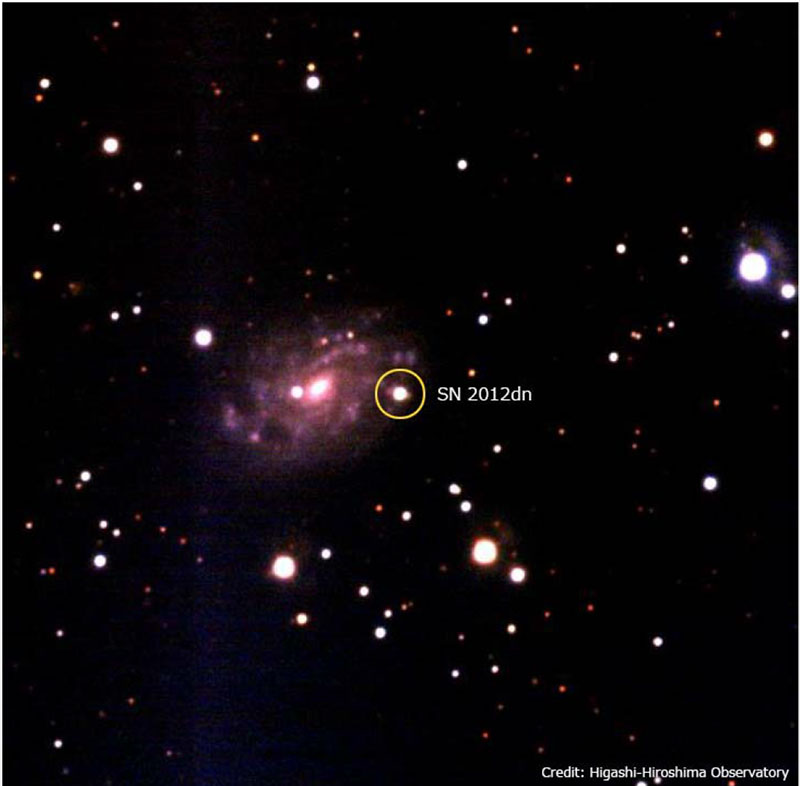Keiichi Maeda (Graduate School/Faculty of Science) and his colleagues revealed the origin of "extraordinary over-luminous supernovae" using observational data obtained through the Optical Infrared Synergetic Telescopes for Education and Research (OISTER) in Japan.
The researchers discovered an anomalously strong infrared emission from "the extraordinary supernova" SN 2012dn, which has never been observed in other Type Ia supernovae to date.
Through detailed analysis, the researchers concluded that the infrared emission comes from the material ejected from the progenitor system.
Uncovering the origin of the "extraordinary" supernovae is key to understanding the origin of typical supernovae, and whether or not it is the same as the origin of the "extraordinary supernovae". In addition this finding could improve measurements of the universe's expansion rate as the brightness of "extraordinary" supernovae contaminate other samples.

Further Information
Japan OISTER collaboration uncovers the origin of extraordinary supernovae
http://www.nao.ac.jp/en/news/science/2016/20160607-oister.html





